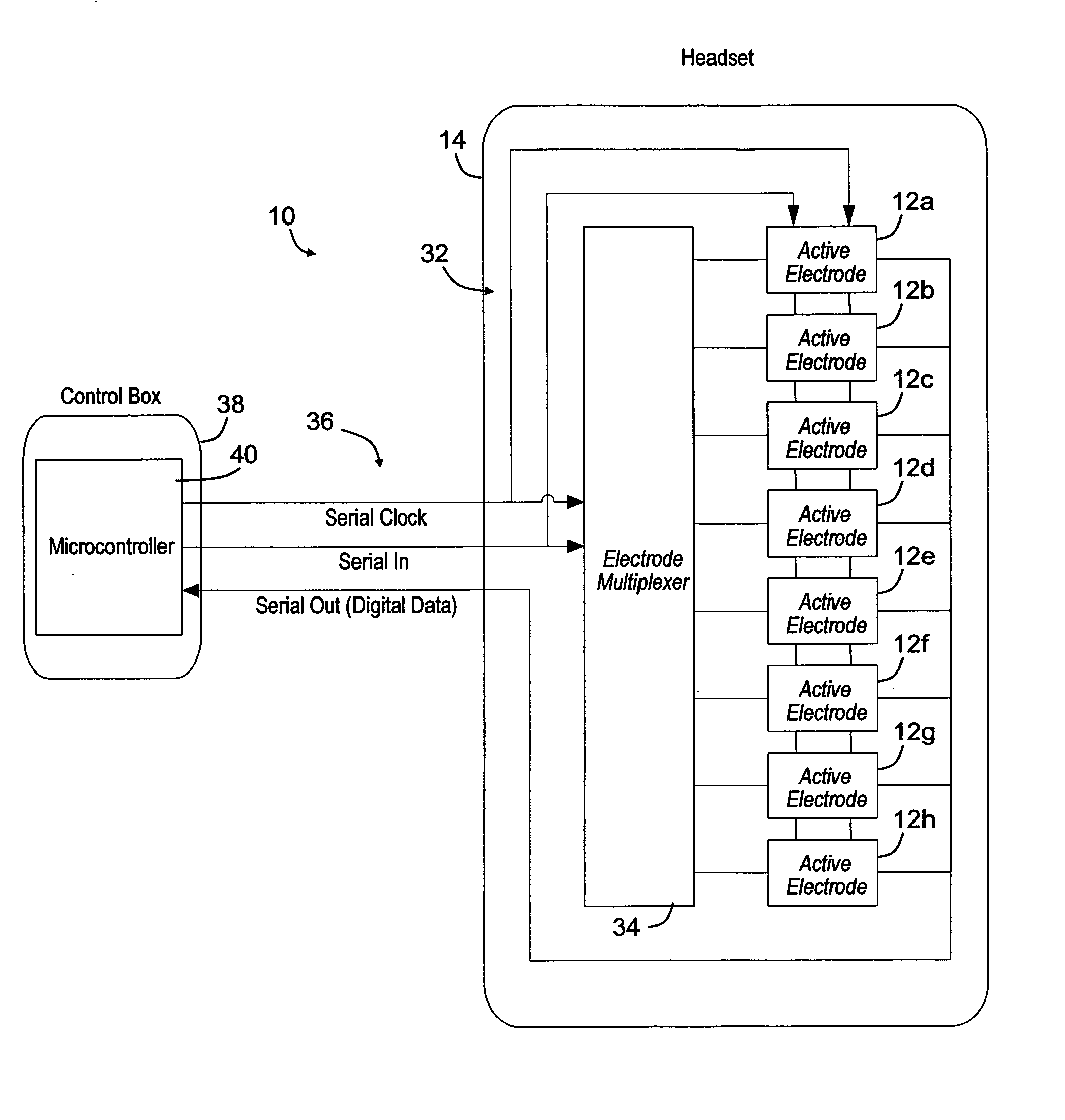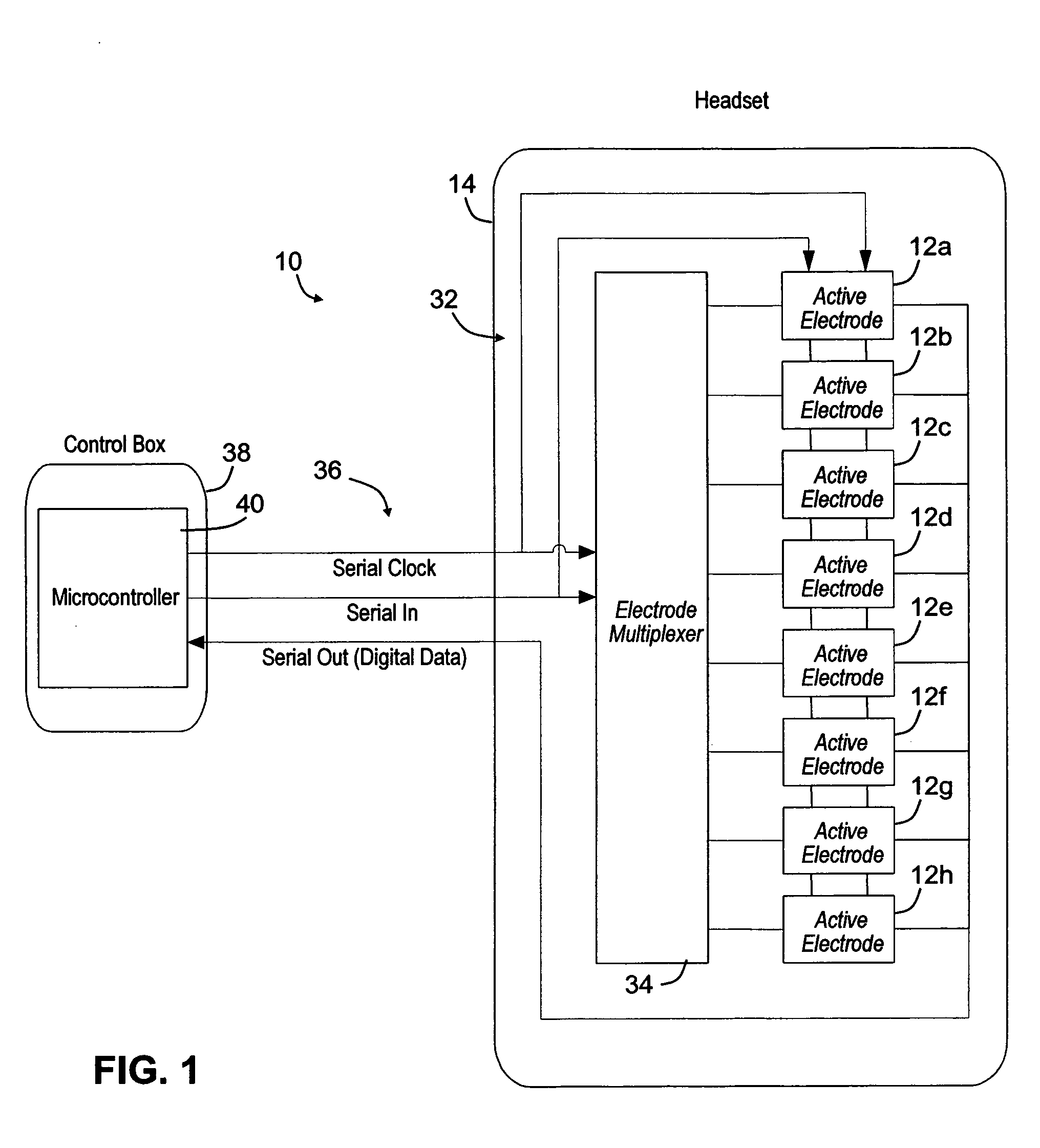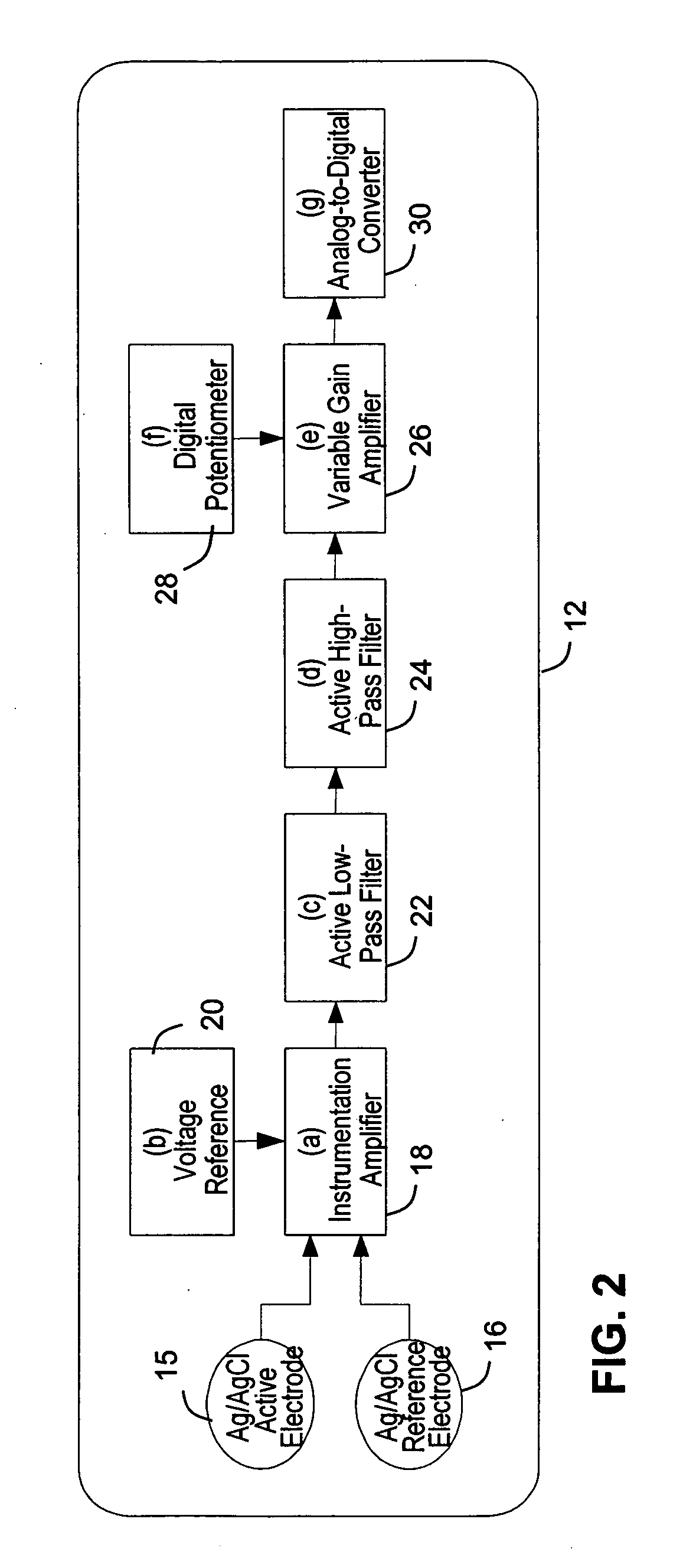Active, multiplexed digital electrodes for EEG, ECG and EMG applications
a digital electrode and multiplexing technology, applied in bioelectric signal measurement, medical science, diagnostics, etc., can solve problems such as contributing to signal-to-noise ratio degradation, and achieve the effect of preventing digital noise, and improving the signal-to-noise ratio of a sensed
- Summary
- Abstract
- Description
- Claims
- Application Information
AI Technical Summary
Benefits of technology
Problems solved by technology
Method used
Image
Examples
Embodiment Construction
[0028] In FIGS. 1-2, a biopotential measurement system 10 is designed using a revolutionary approach to the acquisition of an electroencephalogram (EEG) by incorporating active, digital electrodes 12a-12h into a headset 14 that amplifies and digitally converts an EEG signal at the source, thereby eliminating noise and signal degradation issues. This is to date the most integrated and advanced electrode designed for any electrogram measurement. To significantly reduce the poor Signal-to-Noise (SNR) problems seen in EEG recordings, amplification and filtering electronics are incorporated into each electrode.
[0029] With particular reference to FIG. 2, each active, digital electrode 12 senses an electrogram as a biopotential differentially between a respective AG / AgCl signal conductive contact 15 and a shared Ag / AgCl reference conductive contact 16 is first amplified using an instrumentation amplifier 18 with a fixed output gain of 50 referenced to a voltage reference 20 and a very hig...
PUM
 Login to View More
Login to View More Abstract
Description
Claims
Application Information
 Login to View More
Login to View More - R&D
- Intellectual Property
- Life Sciences
- Materials
- Tech Scout
- Unparalleled Data Quality
- Higher Quality Content
- 60% Fewer Hallucinations
Browse by: Latest US Patents, China's latest patents, Technical Efficacy Thesaurus, Application Domain, Technology Topic, Popular Technical Reports.
© 2025 PatSnap. All rights reserved.Legal|Privacy policy|Modern Slavery Act Transparency Statement|Sitemap|About US| Contact US: help@patsnap.com



